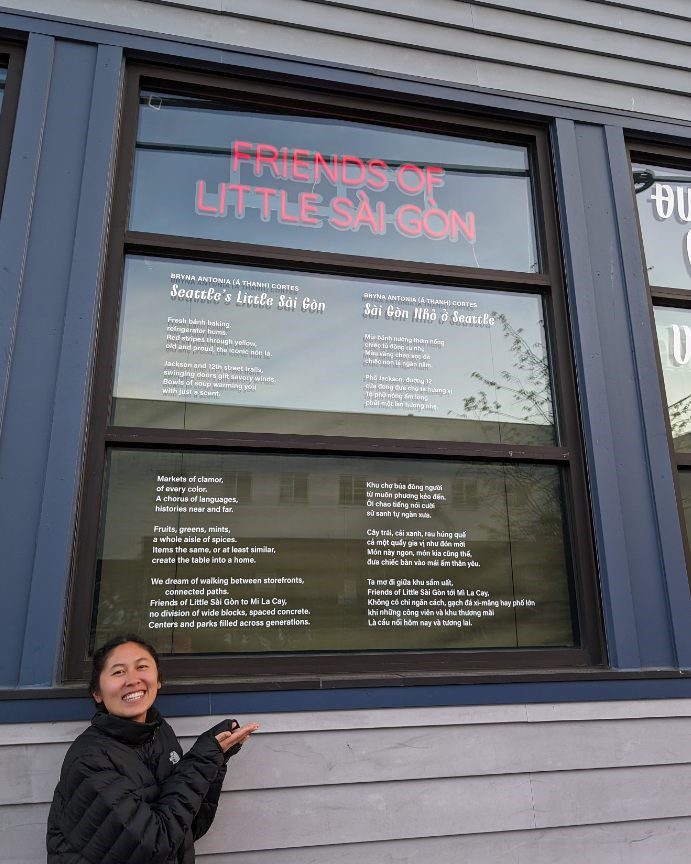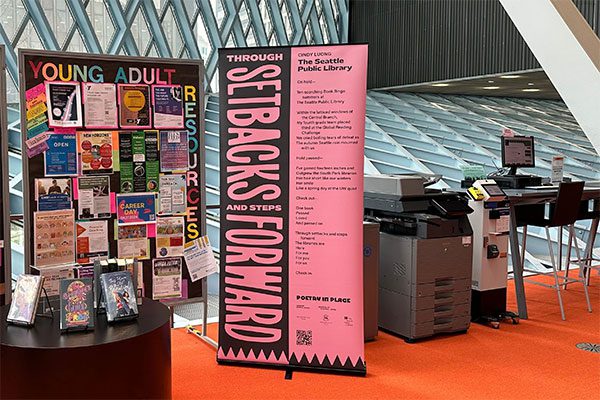
The final exhibition in the Dialogues in Art: Exhibitions on Racial Injustice series
September 12 – November 11, 2016 at Seattle Presents Gallery in the Seattle Municipal Tower
Open Thursdays from 12 – 2 p.m.
SEATTLE (Sept. 27, 2016) —This fall, the Seattle Presents Gallery will feature a multimedia installation by artist Sam Vernon. The installation Rage Wave is a partner program with Interstitial Gallery where Vernon has created an accompanying multimedia, site specific installation. At Interstitial and Seattle Presents Vernon uses the gallery space to explore architecture, body, labor, domestication, and the boundaries between public and private.
 Rage Wave is part of the Seattle Presents Gallery series Dialogues in Art: Exhibitions on Racial Injustice, a yearlong exploration of artists’ and curators’ interpretations of racial injustice and systemic racism impacting Black and African-American people throughout America.
Rage Wave is part of the Seattle Presents Gallery series Dialogues in Art: Exhibitions on Racial Injustice, a yearlong exploration of artists’ and curators’ interpretations of racial injustice and systemic racism impacting Black and African-American people throughout America.
Vernon plastered the walls of the Seattle Presents Gallery with a combination of black and white photocopies and color saturated 5×7 photographs. The photocopies are of the artist’s original drawings, video projections, found materials, and varied artist contributions. The copies cover the walls from floor to ceiling and spill out onto the floor of the gallery, giving the impression of a creative artist furiously at work.
Vernon earned her MFA in Painting/Printmaking from Yale University in 2015 and her BFA from The Cooper Union for the Advancement of Science and Art in 2009. Her installations combine photocopied drawings, photographs, paintings and sculptural components in an exploration of personal narrative and identity. She uses installation and performance to honor the past while revising historical memory. Vernon has most recently exhibited with Brooklyn Museum, Queens Museum, Fowler Museum at UCLA, Seattle Art Museum, Ewing Gallery of Art & Architecture at the University of Tennessee, Knoxville, the Emery Community Arts Center at the University of Maine, Farmington, MoCADA, or the Museum of Contemporary African Diasporan Arts in Brooklyn.
The Office of Arts & Culture, in partnership with the Office for Civil Rights, is committed to addressing, and increasing community-wide awareness about, existing inequities so that we, along with our cultural and community partners, can most effectively work together toward a vision of racial equity. Seattle Presents Gallery features a variety of immersive installations, curated exhibitions pulled from the city’s Portable Works Collection, resident artists, and original artworks. The gallery presents both emerging and established artists and curators, and provides all who pass by the opportunity to engage in diverse arts and cultural experiences.
Participating artists in the Dialogues in Art: Exhibitions on Racial Injustice series
Xenobia Bailey studied ethnomusicology at the University of Washington, and received her BA in industrial design from Pratt Institute in Brooklyn, NY. Her pieces are often connected to her ongoing project “Paradise Under Reconstruction in the Aesthetic of Funk”. Her designs draw influences from Africa, China, and Native American and Eastern philosophies, with undertones of the 1970’s funk aesthetic. Bailey has been artist-in-residence at the Studio Museum in Harlem, the Society for Contemporary Craft in Pittsburgh, and the Marie Walsh Sharpe Art Foundation in New York City. Bailey co-organized a Black Cultural Workshop with the African-American inmates at McNeil Island Federal Penitentiary and Monroe State Reformatory in the 1970’s. Her work has been exhibited at the Studio Museum in Harlem, the Jersey City Museum, the New Museum of Contemporary Art, and the High Museum of Art in Atlanta and NAAM. Her work is in the permanent collections at Harlem’s Schomberg Center for Research in Black Culture, the Allentown Art Museum, the Museum of Contemporary Arts, and the Museum of Arts and Design.
Jasmine Iona Brown was born in Indianapolis, Indiana and traveled to five continents before settling in West Seattle. She earned her B.F.A. at Howard University and her M.A. from UCLA. Her graduate study in ancient history and cultures led her to incorporate antique artistic mediums, such as egg tempera, into her artwork. She is fascinated with the human face and the tragic narratives of marginalized people. Brown is the recipient of a 2011 Puffin Foundation Grant to paint a series of Byzantine style egg-tempera icons memorializing a few of the many children of color that are lost to violence.
Barry Johnson is a Washington-based visual artist and filmmaker from Kansas who’s had a range of works in visual art and film shown across the U.S. and the world. Waking up at 2 am every morning to paint in his studio, Johnson works tirelessly to create pieces that challenge views on gender, race, sex, and sound. His work is a result of events taking place around the world and in everyday life.
Mark Mitchell is an artist who speaks to social issues through textiles. His contributions to Seattle’s cultural community bridge a number of disciplines, including art, music, theater, fashion, activism, and education. He is the subject of the award-winning documentary film Burial, and presented a performance and exhibition of the same title at the Frye Art Museum in 2013.
Shaun Scott is a Seattle-based independent filmmaker whose first feature film was “Seat of Empire” (2009), a 3-hour long documentary tour of the city of Seattle using archival footage. In 2010 he directed and wrote “Waste of Time”, a historical mash-up of original footage, archival images, and contemporary music meant as a portrait of consumer capitalism.
Interstitial functions as space between the studio and the commercial gallery for artists to explore ideas related to the creation and consumption of new media. Interstitial (formerly Interstitial Theatre) was founded in September 2010. At that time Interstitial Theatre’s goal was to provide space and time to contemporary artists to exhibit new media art in Seattle. In January 2015 Interstitial opened its first dedicate space in the Georgetown neighborhood. Interstitial is powered by Shunpike, a 501(c)3 nonprofit organization.
# # #


